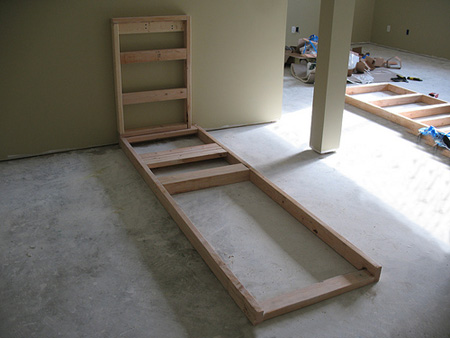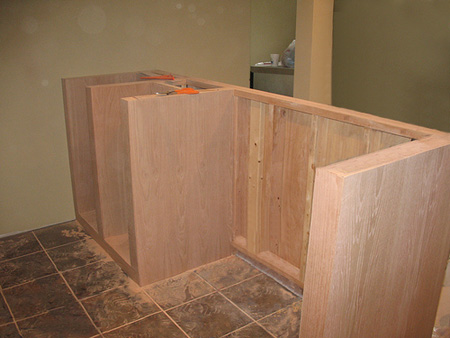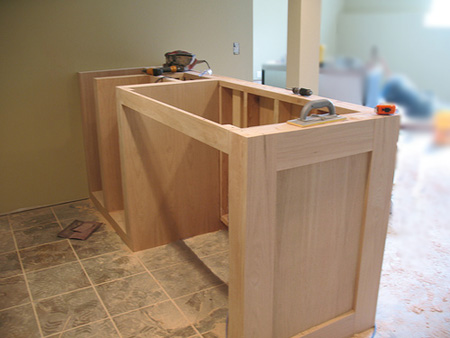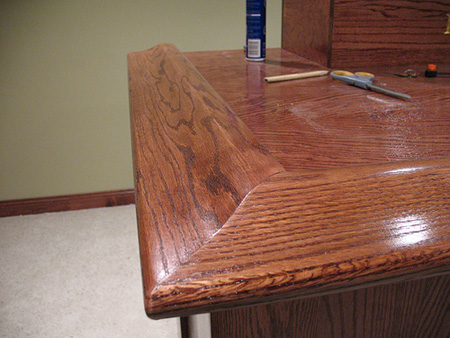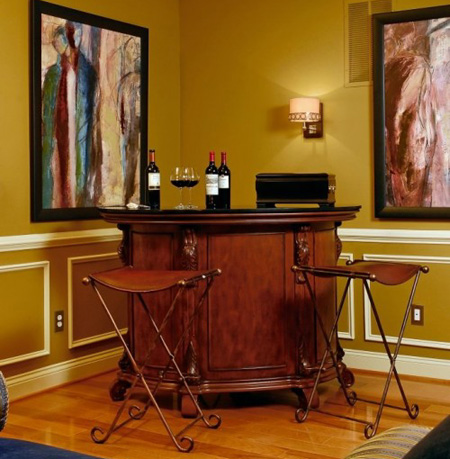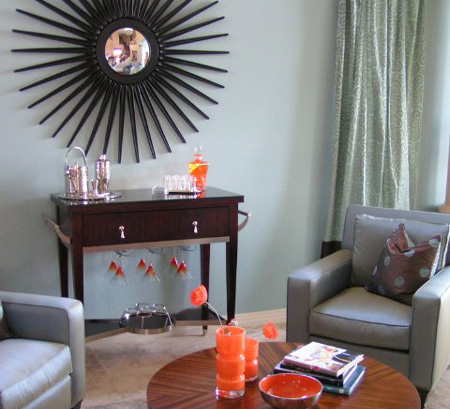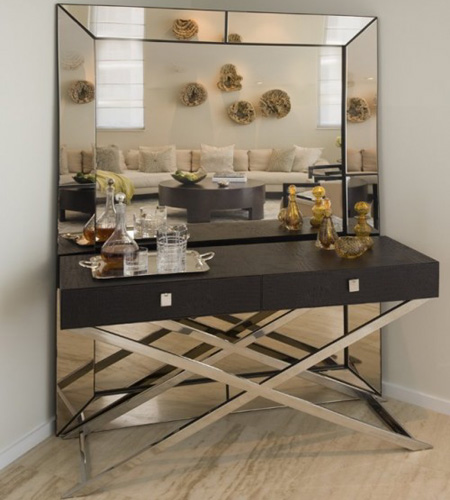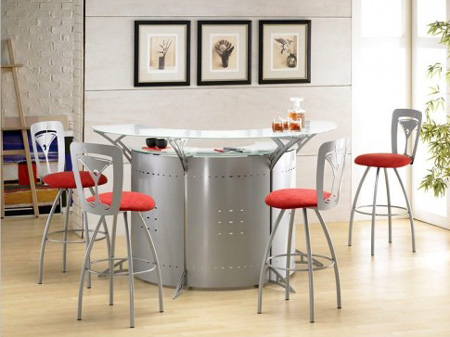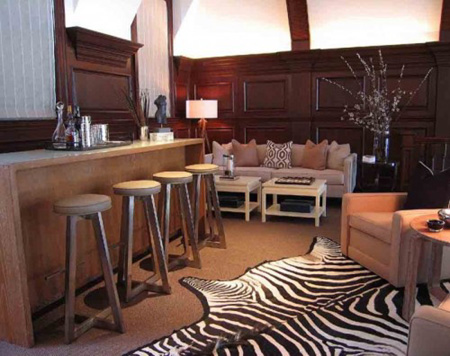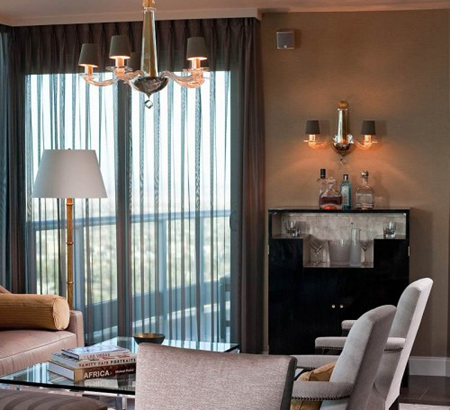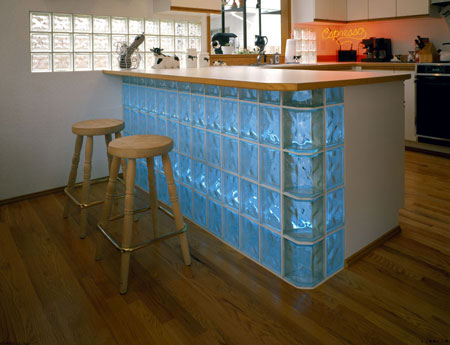Build an indoor bar
An indoor bar or patio bar, is one of the ways to add some excitement to your indoor / outdoor entertainment area. Here's how to put together a design and start building a bar.
Before you start you will need to sketch a design for the bar. Make it as detailed as possible. Specify the dimensions of the bar including height, length and width. Sketch the sides, front and top. You will find plenty of free diagrams on the Internet that will help you to design your own home bar but you will probably find that it is better to use your own design to custom fit a bar for your home. Plus, the majority of plans on the Internet are either Imperial measurements, or do not use materials that we have available locally.
Material choices
There are quite a few options that you can use to build your bar. The main frame will obviously be constructed from pine, but the panelling and top can be one of several materials. Selecting the right materials for the bar depends on the style or theme you want to create. Bars are made from wood, but you can use other materials with it. For example, you can put the veneer top on the corrugated metal, granite, stone, concrete or plywood.
Marine plywood is excellent for a home bar, with its wood grain veneer it is easy to stain in a wide choice of colours. Marine plywood is slightly more expensive than pine plywood, but far more durable and water resistant to boot.
If you choose pine plywood you may have to do some shopping around to find nice boards.
There are plenty of boards out there that aren't very nice - the same applies to commercial plywood or shutterply.
BisonPly and SupaPly use BisonBord and SupaWood respectively as a substrate, surfaced with a genuine timber veneer. BisonPly and SupaPly are ideal for flat surface wood finishes that can be combined with matching solid timbers moulded to shape.
They offer an affordable solution to using solid timber. They are primarily used in upmarket applications such as solid timber kitchens, office and boardroom furniture as well as panelling or wall cladding.
Laminated pine or meranti shelving is another option, but bear in mind that this product is only available in board sizes of up to 600mm wide, so you may have to make more panels for the front and side of the bar to compensate for this.
MelaWood is the most decorative choice for a home bar and is available is a wide selection of finishes. When using MelaWood, which is a laminated board, you will need to add edging to finish off. The same applies to BisonLam or SuperLam.
Supawood (MDF) blends the advantages of manufactured board with the natural properties of solid timber, allowing for most traditional wood working techniques.Supawood can be used in its natural colour or stained with a lacquer while it also provides a surface that is ideal for priming, painting, printing, veneering and laminating.
Designing a bar
Before you start to build a home bar, you need to prepare the area. The ground needs to be level and the existing floor in good condition.
Step 1
Begin with the base. Cut the wood according to the dimensions you set down and start to build the bar from the bottom up. If you want your bar to be mobile - so that you can take it with you if you ever move - make a freestanding frame. If you are going to put the bar in permanently, fasten the base to the floor with anchor screws.
Step 2
Using the base as a guide, start to build up a supporting frame to the desired height. Once this has been done you can start to cut the side and front panels for fastening to the frame.
Step 3
All the framework is now in place to start adding any decorative trim or adding framing for the top. This is also where you will add any shelving or doors that are to be fitted.
Step 4
The bar is now ready for the top to be fitted. There are a wide choice of materials that you can use for a bar top, depending on the budget. Pine is obviously the most affordable, and with good finishing techniques there is no reason why a pine top can't look good.
While hardwoods are expensive, sometimes it is worth the cost for a home bar that looks stunning. Other alternatives include cement fibre board topped off with natural stone, ceramic tile or mosaic, a pre-moulded concrete top, granite, stainless steel or aluminium. Bear in mind that for a heavy top you will need to install a very strong and sturdy support frame.
Detailed moulding and trim can be found at your local Builders Warehouse and you can use pine or meranti skirting, dado rails, cornice or crown moulding for this.
Home bar ideas


